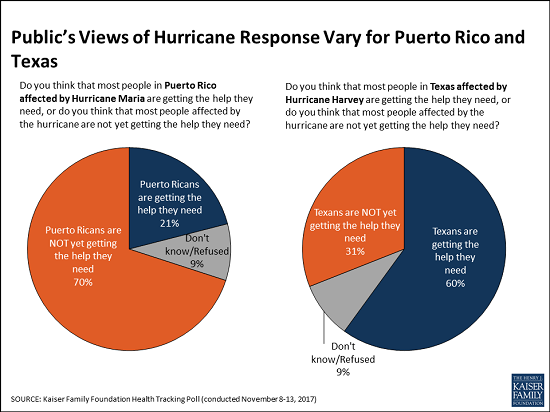Health Resolutions You Can Stick To In 2018

We ask the experts which resolutions we should be making this year, and how we can actually stick to them.
Whether it's giving up smoking, exercising more, or getting our 5-a-day, most of us have usually given up before January ends.
But with a little help from the pros, you can live a happier, healthier life in 2018...
1. Drink more water
Health and fitness mentor Sarah-Anne Lucas (birdonabike.co.uk) says starting a daily ritual is the answer to New Year resolutions. She suggests drinking more water: "Water intake is massive. Most people do not drink enough, but what we'd all like is more energy. That comes down to what you put in, so increase your water intake. It's the first thing you put in your body in the morning. Go and get yourself a minimum of 100ml water and get it into you. To progress that practice, add lemon, to make the body alkaline. Lemon water is amazing, it also adds a bit of flavour."
2. Learn to meditate
Life-coach and mindfulness practitioner Dr Caroline Hough (aspiring2wellness.com) says we can train our minds to reduce stress, making us more likely to achieve our goals: "It involves sitting and meditating for 20 minutes. Bring yourself into the moment and be aware. That's an awareness of your external environment, so just looking at the flowers and the trees and the sunshine and appreciating it instead of rushing through life. Be aware of your internal environment, by noticing if you're very stressed, for example if you're clenching your muscles. We tend to live our lives at a level of stress which is unhealthy."
3. Start self-watching
Professor Jim McKenna, head of the Active Lifestyles Research Centre at Leeds Beckett University, advises we record our successes to motivate ourselves: "Whatever you want to do, whenever you achieve, write it down. You're trying to achieve it every day, so it needs to be nice and small, and all your job is then is to keep the sequence running. It's really as simple as that. What you're capitalising on there is positive self-regard, but also the fundamental process of self-watching. There's a lot of success in seeing your own achievements. When you collect all that up, you can start saying, 'Actually I've got nearly 10 occasions there when I did well, I'm doing well, I'm someone who can change'."
4. Look after your skin
Louise Thomas-Minns (uandyourskin.co.uk), celebrity skin therapist, recommends we pay more attention to protecting and caring for our skin: "Wash your skin nightly. Not removing make-up, daily dirt, oil, grime and pollutants from the skin every night will result in infections and outbreaks. Your skin regenerates at night too, so give it a helping hand. And don't pick! Picking at your skin will result in scarring and create more spotty outbreaks. Wear SPF every day to slow ageing and protect from the harmful effects of UV rays. Find out your skin type from a skin health expert, so you stop wasting time and money on incorrect products."
Read the original article.
Source:
Go Active (6 December 2017). "Health Resolutions You Can Stick To In 2018" [Web blog post]. Retrieved from address https://www.goactiveincumbria.com/get-started/other/article/Health-Resolutions-You-Can-Stick-To-In-2018-e9f9d40d-ca39-48ed-be2e-b2f88f4061eb-ds
SaveSave
SaveSave
Benefits to plants at your desk
Leaves on trees have turned, and a walk to the office often feels like a walk through an icebox. Open windows are a thing of months past. Cooped up, breathing dry indoor air, no one could blame you for feeling down.
But you can brighten your mood and boost your health by adding a plant or two to your workspace. You don’t even need much natural light or a green thumb.
Plants bring a bit of nature inside, along with other good stuff.
They make people happy, and taking care of them can make people even happier. That’s especially true if you’re digging in a garden – horticultural therapy helps sharpen memory and cognitive skills – but desk-side pruning can do wonders for your mental state too.
Plants are also terrific air purifiers.
The air in your office (and home) might be more polluted than air outside – especially if you’re in a big city. Furniture, carpet, plastic items and other synthetic materials are to blame, according to the Environmental Protection Agency.
Plants help by wicking away airborne chemicals and the carbon dioxide we puff out, and then give us oxygen, research from NASA shows.
Four decades ago, NASA scientists found more than 100 volatile organic compounds floating through the air of the Skylab space station. The bad stuff came from synthetic materials off-gassing low levels of chemicals such as formaldehyde, benzene and trichloroethylene – known irritants and potential carcinogens that are in earthly buildings too.
When the chemicals are trapped in an area, people breathing within that same area can get sick because the air isn’t getting “the natural scrubbing by Earth’s complex ecosystem,” as NASA puts it.
Hail plants.
Here are two that demand next to nothing and tolerate very low light (but are just as happy with lots of it). Expect them to live for years and years, without repotting. I speak from experience, but you’ll also find them on plenty of lists and in lots of books about easy-care plants that are good for your health.
Snake Plant or Mother-In-Law’s Tongue (Sansevieria trifasciata)
A sturdy plant with upright and stiff leaves. Ideally, its soil should dry out between waterings. It will grow bigger and look better if you water it as soon as the soil dries (not wait forever) and if it’s in medium light. But it still will live for months if you ignore it, and spring back to robust happiness when you give it a little love.
Pothos (Epipremnum aureum)
A flowing plant with vine-like stems that can easily take over your desk. Ideally, its soil should stay a little moist. But if you let the soil dry out completely, you can jolt the plant back to life with watering. It’s perfectly happy with all kinds of lighting, including florescent, but it will be fuller with better color when it gets decent natural light.
Read the original article.
Source:
Malek M. (4 December 2017). "Benefits to plants at your desk" [web blog post]. Retrieved from address https://workwell.unum.com/2017/12/3255/
How millennials are shaping employee benefits
By 2025, the millennial generation will make up more than 75% of the U.S. workforce. With this spike and the need for new ways of thinking, employers are updating their benefits packages to entice the future talent of their companies.
Traditionally, the two big-hitting variables for potential employees are, you guessed it, salary and benefits. But what are millennials looking for when it comes to the actual benefits package? They’re looking for good pay and insurance, to be sure, but Care@Work names eight of the most swoon-worthy benefits for the millennial generation including flexible employee benefit options, holistic approaches to wellness, and lifestyle solutions.
Flexible employee benefit options
As the spice girls sing, “I’ll tell you what I want, what I really, really want.” Excuse the pop culture reference, but millennials will get it – and they know what they want. They don’t fit into a cookie-cutter benefits package, and instead look for flexible plans to satisfy their needs. Flexible benefit plans allow employees to choose benefits they want from a package of programs offered by their employer. Flex plans may include health insurance, retirement benefits or reimbursement accounts.
Holistic approaches to wellness
Millennials are constantly bombarded with the notion of living a healthy lifestyle. They are looking for employers who don’t just hand them a health insurance packet but also serve as proactive partners for their health and well-being. They are looking for opportunities to join work-sponsored club sports, health screenings at the campus clinic and lunch-and-learns on low carb Crockpot diets. Can you hear those spice girls singing in the background again? An added bonus: Companies benefit from this approach as well!
Lifestyle solutions
Another hallmark of millennials is the “access over ownership” mentality. With the majority of employees’ everyday lives revolving around technology, companies are finding ways for them to access and elect their benefits online rather than the old pen and paper approach. Millennials want solutions to their everyday responsibilities while they are giving their all on the job. So, other lifestyle solutions they might look for are child care services, therapists and dog walkers. Instead of driving home during your lunch break to walk the dog or pick up the kids, why can’t dogs and kids come to work with you and have their needs met at daycare while you’re on the third floor running from meeting to meeting?
“Employees are looking for the ‘total package’ and that’s what Unum is hoping to offer,” says Ben Roberge, human resources benefit consultant at Unum. “We want to think of benefits in terms of total rewards, combining compensation and benefits to entice and engage existing and future employees.”
Whether you just landed that big job or are still weighing your options, consider if your company is forward-thinking and meeting your needs and wants.
You can read the original article here.
Source:
Dunham H. (21 June 2017). "How millennials are shaping employee benefits" [Web blog post]. Retrieved from address https://workwell.unum.com/2017/06/millennials-shaping-employee-benefits/?utm_sq=flhwx3lz6b&utm_source=Twitter&utm_medium=social&utm_campaign=workwelltweets&utm_content=Benefiting+you
6 tips to balance your work, family time
Climbing the career ladder as a bachelor or bachelorette is challenging enough, but having a partner or loved ones at home can add a significant level of complexity and even some guilt. There are a few ways to help manage the constant balance.
Drop Multitasking
It may be tempting to get on a work call while you are playing with your kid or out with your spouse, but the act makes you less present for your family and your client. Instead, whenever possible, choose which one you want to focus on at that moment.
Only Make Commitments You Can Keep
Stay honest in what you are capable of, as family needs sometimes will trump work needs, and vice versa. Frank conversations are easier than broken promises, particularly if you respect that both your family and your work are of equal importance and that which takes precedence depends not just on your values, but on the circumstances of the moment.
Build in Work into Vacations
It is counterintuitive, but consider setting aside an hour or so during family days or vacations to get work done. The thoughtful act puts you on the offensive (choosing your time) rather than the defensive (worrying about getting away), raises your chances of actually being productive and allows you to get the work out of the way so you can be completely focused on your loved ones later.
Know Your Family Absolutes
Most loved ones or families have absolute priorities, like always eating dinner together or always attending a partner’s event. Discussing and establishing the non-negotiables allows you to know the boundaries and creates a level of flexibility around the less important activities.
Separate Temporary From Permanent
A month of late nights and early mornings is different than a five-year career-only focus. Honestly look at the pattern of your work at the moment, assess where things are headed and avoid panicking over what could be a short-term imbalance.
Explain Your Work to Loved Ones
It can be easier to keep work at work, but try sharing some details of your current career track with your family. Even the youngest members or the least experienced loved ones may give empathy and perhaps will show more flexibility in their own needs after they better understand why you are struggling with balancing everything in your life.
You can read the original article here.
Source:
Brown D. (25 September 2017). "6 tips to balance your work, family time" [Web blog post]. Retrieved from address https://workwell.unum.com/2017/09/6-tips-balance-work-family-time/
It’s the most stressful time of the year: 5 tips to get your employees through the holidays
It’s that time of year again. Employees are preoccupied with thoughts of holiday shopping, party planning and visiting relatives, and the stress of it all can seriously impact their work. So what can you do to help?
While stress is a year-round issue, there are more obvious triggers for it around the holidays. Mark Malis, the head of global human resources at LifeWorks, assembled a list of five common causes of stressduring this time of year, and what you can do to tackle them.
1. Heavier workloads
Employees taking more days off means less time to get things done. It’s hard not to feel overwhelmed with work and holiday deadlines coming up fast.
The fix: Help your employees relax a little by making them feel valued. Let them know their hard work isn’t going unnoticed. You can even encourage employees to identify which colleagues are going the extra mile, and reward them with gifts.
2. Unhealthy eating
Plenty of sugary food options are always floating around during the holidays. All of the cookies and eggnog can really make your employees feel sluggish.
Encourage your employees to make better choices by hosting a healthy potluck. You can even turn this initiative into a weight loss competition to keep the good food choices going.
3. Finances
With the average American shopper expecting to spend almost $1,000 this holiday season, it’s no wonder money is on everyone’s mind.
Financial wellness workshops or budget planning seminars could really help your employees come up with a realistic budget and control their holiday spending. The less they’re worrying about money, the more employees will be able to focus on their work.
4. Depression
The holidays aren’t a joyful time for everyone. Some employees could be struggling with sad memories that resurface around this time of year.
When it comes to mental health, openness is always a good way to go. Encourage employees to discuss these feelings with each other in a supportive group setting. This can allow employees to help each other find solutions and make anxious workers feel less alone.
5. Illnesses
With the holiday season comes cold and flu season, too. Getting sick when you have a million things to get done can be disastrous.
It’s important to remind your employees about good hygiene practices. Make it clear that anyone who’s sick needs to stay home; the last thing you need is half the office out with the flu. Distributing handbooks or posters with tips to stay healthy can be a big help, too.
You can read the original article here.
Source:
Mucha R. (16 November 2017). "It’s the most stressful time of the year: 5 tips to get your employees through the holidays" [Web blog post]. Retrieved from address https://www.hrmorning.com/its-the-most-stressful-time-of-the-year-5-tips-to-get-your-employees-through-the-holidays/
5 ways digital tools can help build a better benefits package
"...digital tools can be excellent motivators and are a popular option for keeping employees to their wellness objectives..." In this article from Employee Benefit Advisor, we get a fantastic look at some statistics and digital tools to create better employee engagement.
The American workforce has an employee engagement problem: Half of U.S. workers are disengaged, according to a recent Gallup poll. That not only has a detrimental effect on individual wellness, but on company culture and the bottom line. According to The Engagement Institute, disengaged employees cost organizations between $450 and $550 billion every year. In addition to being less productive, they’re also more likely to quit.
One of the most effective ways to improve employee engagement is to offer better benefits. In fact, research conducted by Willis Towers Watson found 75% of employees said they were more likely to stay with their employer because of their benefit program. This demonstrates the value of designing an employee benefits package that really works for your staff. And to even better engage workers with benefits, employers should utilize HR apps and employee wellness software.

They vary in functionality, device compatibility, and of course price, but they all share five considerable advantages:
They’re highly adaptable. Unlike programs that rely on in-person use or resources that are primarily stored in binders, digital content can be updated on the fly. This flexibility makes it very easy to keep the information current and relevant, and it even opens the door to personalized benefits. For instance, if each employee has their own login, they can bookmark the resources they find most useful and receive suggestions based on those picks. Seventy-two percent of employees in a MetLife survey say being able to customize their benefits would increase their loyalty to their current employer, which makes this perk doubly advantageous.
They’re fully integrative. One major complaint employees have is that their health information is so disjointed. Dental, physical, psychological and nutritional data is siloed, creating a cumbersome situation for employees when it comes to accessing and updating their records. Digital tools neatly solve this problem by collecting all these resources in one place. All employees have to do is sign into one account to view all their health-related resources, benefits, emergency phone numbers, enrolment information, health savings account balance and so on.
They’re constantly accessible. Have you noticed your staff using fewer and fewer benefits over time? It’s easy to assume they’ve lost interest, but chances are they’ve simply forgotten what’s available to them. Digital tools are a fantastic way of combating that attrition for a couple of reasons. First, they’re super easy to access because they can be used essentially anytime, anywhere. The second reason your staff is more likely to continue using their benefits with a digital platform is because it can serve them with notifications and reminders. They no longer have the excuse of being unaware when fresh content is added, or missing medical appointments.
They encourage employee goals. To add to the previous point, digital tools can be excellent motivators and are a popular option for keeping employees to their wellness objectives. Two of the most common goals are weight loss and smoking cessation, but your employees can use calendar, reminders, notes, fitness trackers and other features to push them toward any goal they like.
They’re easily scalable. Finally, digital tools are the most efficient way of reaching a large employee base, especially if they’re spread over a large geographical distance. It’s impossible to expect a thousand employees located in different states to attend a stress management seminar, for example, but it’s not unreasonable to ask them to watch a five minute video or listen to a podcast. Digital resources are changing the game when it comes to reaching all employees equally so that no one gets left behind.
Some things to keep in mind
Now that you’ve been convinced to digitize your employee wellness program, there are a couple of assurances you should make. The first is confidentiality. Your employees need to feel safe accessing your health resources, so guaranteeing the security and privacy of their information is a must. You should also make accommodations for various accessibility concerns. In other words, having all your resources in video format isn’t helpful for employees who are visually impaired. Also be aware of the different situations in which your staff might need access (at home, on the go, with or without an internet connection, etc) to ensure maximum ease of use.
Why is this all so important? As cool and cutting-edge as many of these digital tools are, at the end of the day your goal is to promote employee well-being and engagement. Anything that encourages your staff to come into work with a smile on their faces is worthwhile. Gallup studies have shown highly engaged organizations are 21% more profitable, 17% more productive, and achieve a 41% reduction in absenteeism. No matter how effective your current benefits package is, you can — and should — take it to the next level with a digital program.
Read the original article.
Source:
Mittag A. (17 November 2017). "5 ways digital tools can help build a better benefits package" [Web blog post]. Retrieved from address https://www.employeebenefitadviser.com/opinion/5-ways-digital-tools-can-help-build-a-better-benefits-package?feed=00000152-1387-d1cc-a5fa-7fffaf8f0000
SaveSave
SaveSave
SaveSave
4 tips for workplace gift giving
The holidays should be a time of bliss and celebration. However, this often isn’t the case when the stress of deciding if coworkers will make it on your holiday shopping list sets in.
So, as you make that list, check it twice, and consider these key points before you find yourself in an uncomfortable workplace gift exchange.
The company gift-giving policy
Almost every large company has one, and it isn’t just excluded to company clients and outside business partners. It also applies to gifts given between employees. While many companies allow for gifts to be given below a certain dollar amount, make sure to look for this policy or contact Human Resources before purchasing any gifts or organizing a gift-exchange.
Reasons for giving
While all gifts should be exchanged in the spirit of the holidays, some people may have ulterior motives. If you have recently begun negotiations for a raise or promotion, you will want to steer clear of buying your manager anything that seems to be trying to influence their decision. Typically, the flow of gifts should always be downward, not upward within a company.
Office culture
This is especially important if you are new to the company. Did people start talking about the annual gift exchange before Thanksgiving? Or have you already received an invite to the holiday team lunch?
Among a survey of U.S. workers, 45 percent say they give their office peers a gift during the holiday season, and 56 percent spend more than $20 doing so.
It’s important to use your best judgment to determine the office norm and if you need to, ask a co-worker to confirm your suspicions.
Be inclusive
If your company does allow for gifts to be exchanged, make sure everyone on the team is included. A great way to do this is by offering an opt-in vs opt-out gift exchange. This way everyone is invited, but not everyone has to choose to participate. This is mindful of employees who may be experiencing a financial hardship that won’t allow for unnecessary purchases this holiday season.
With all things considered, remember that gift giving at work is a company specific characteristic and the best place to look to find answers to your questions may be internal. Who knows, the coworker sitting three cubicles down playing Christmas music in October and the coworker next to him whose personality closely resembles the Grinch, may actually be in agreement on a policy like this one.
You can read the original article here.
Source:
Taylor K. (20 November 2017). "4 tips for workplace gift giving" [Web blog post]. Retrieved from address https://workwell.unum.com/2017/11/4-tips-for-workplace-gift-giving/
CenterStage: Help Us Fill The Truck!

For this month’s CenterStage, we’ve decided to do something a little different. Due to the holiday season being in full-swing, we wanted to spread the love and joy that fills our hearts this time of year by sharing with you our involvement with Fill the Truck as a sponsor.
"One of the best parts of Fill the Truck is being there to deliver the donated goods to our awesome charities. The expressions on their faces and their gratitude, makes all of the hard work and extra efforts worth every second."
-Kelly Ackerman, Sales Operations Director at Frames USA
Our Part & Yours
Saxon invites our local community to come together in donating things like personal care items, toilet paper, winter clothing and bedding to fill up boxes. These items allow us a chance to give back directly to our local community. Then, we load the boxes up onto the truck, overjoyed with the sensation of giving back to those in need.
The truck delivers to all charities involved – such as The Healing Center, who offers practical, social and spiritual support to individuals and families, and the Children’s Home of Northern Kentucky, who focuses on providing a better life for abused, neglected and at-risk children – around the 21st of December, and every donated dollar goes toward buying needed items with no administrative costs.
A Brief Fill the Truck History Lesson
Fill the Truck began when the CEO of Frame USA, Dan Regenold, envisioned filling a 54-foot semi-truck full of supplies for a local charity. His idea flourished into a full-blown charitable operation, including a team of packers, donation collectors, marketing & PR professionals and more.
This year, the 2017 vision is to fill multiple trucks and provide substantial donations to each charity, partnering with several businesses and corporate partners, including Saxon.
You can read the full Fill the Truck history here.
Donate Today
Are you ready to take action and join Saxon for this charitable Community Strong event? Donations can be dropped off directly to Saxon’s local office or any one of the participating locations. Unsure of what to donate? Monetary donations are accepted and will be used to purchase items to help finish Filling the Truck. Happy holidays from Saxon and we look forward to “Filling the Truck”!
Download the PDF
Two Months After Hurricane Maria, A Growing Majority Of Americans Say Puerto Ricans are Not Yet Getting the Help They Need
Two months after Hurricane Maria struck Puerto Rico, a growing majority of Americans say that Puerto Ricans affected by the devastating storm are not yet getting the help they need, the November Kaiser Family Foundation Tracking Poll finds.
This month, 70 percent of the public say that people in Puerto Rico are not yet getting the help they need, up from 62 percent in October 2017. These perceptions vary by party, and half of Republicans (52%) now say Puerto Ricans aren’t yet getting needed help, up significantly from October (38%).
When asked whether the federal government is doing enough to restore electricity and access to food and water in Puerto Rico or not, a majority of the public (59%) says the federal government is not doing enough, up from 52 percent in October. Most Democrats (86%) and independents (59%) say the federal government is not doing enough, but most Republicans (63%) say it is doing enough.
In contrast, Americans see the recovery efforts in Texas following Hurricane Harvey in late August progressing more positively. Most (60%) of the public says Texans are getting the help they need, twice the share (31%) who say Texans aren’t yet getting needed help.
The poll finds similar shares of Americans they are closely following news about recovery efforts in Puerto Rico (63%) and in Texas (58%). Democrats are somewhat more likely to report closely following news about the Puerto Rico recovery (75%) than are independents (61%) and Republicans (54%). In contrast, there are no partisan differences for those following news about Texas.
Designed and analyzed by public opinion researchers at the Kaiser Family Foundation, the poll was conducted from November 8 – 13, 2017 among a nationally representative random digit dial telephone sample of 1,201 adults. Interviews were conducted in English and Spanish by landline (415) and cell phone (786). The margin of sampling error is plus or minus 3 percentage points for the full sample. For results based on subgroups, the margin of sampling error may be higher.
You can read the original article here.
Source:
Kaiser Family Foundation (20 November 2017). "Two Months After Hurricane Maria, A Growing Majority Of Americans Say Puerto Ricans are Not Yet Getting the Help They Need" [Web blog post]. Retrieved from address https://www.kff.org/other/press-release/poll-two-months-after-hurricane-maria-a-growing-majority-of-americans-say-puerto-ricans-are-not-ye-getting-the-help-they-need/
SaveSave
5 ways to empower employees to make smart healthcare choices
As an employer, it's important to help your employees out when you can - especially when it comes to making smart healthcare choices. In this article from Employee Benefit Advisor, Anne Stowell lists five different ways to empower your employees.
As uncertainty in healthcare policy lingers, creating a benefits package with real value for both employers and employees can seem increasingly complex and difficult to achieve. Striving to provide the right care services — ones that are easy for employees to use, and designed to increase engagement in their care while being mindful of costs — is undoubtedly a tricky balancing act.
So how can employers engage to help employers offer benefits that have real and lasting value, while empowering employees to make smart care choices? Here are five tips:
1) Learn your clients’ hot buttons. Value is one of the most important factors employers consider when shopping for benefits. Rise Broadband, for example, the largest fixed wireless service provider in the U.S., has a large number of employees working in the field to service remote customers. Accessing healthcare when employees are on the road was a real challenge. Jennifer Iannapollo, the company’s director of HR, says their telehealth benefit provides employees with real value, and was the clear answer for this Colorado-based employer.

Bloomberg/file photo
2) Recognize empowerment comes with confidence. Employees won’t use what they aren’t sure of. Iannapollo also was careful to choose a telehealth platform that focused on quality. “Some people needed reassurance about who would be treating them and how they would know their medical history. We reassured them that their medical records and history are collected when they register and that the physicians are all board certified and average 20 years of experience. That provided them with peace of mind,” she says. Security practices and certifications can also add a level of comfort, and are something advisers should keep in mind in their recommendations for any product to employers.
3) Remind employees to take charge of their own healthcare destiny. A recent Teladoc survey of more than 300 employers found that a whopping 66% stated that lack of benefit awareness negatively affects employee engagement with health benefits. That’s where advisers have an opportunity to shine by emphasizing the need to communicate and educate employees not just during benefit season, but whenever/wherever their moment of need might be. “Surround sound” reminders are proven to help. One creative idea that Rise Broadband adopted was dashboard stickers that help field technicians’ keep available benefits top of mind.
4) Combat “vendor fatigue.” Employers are inundated by the staggering number of benefits options, not to mention trying to manage countless vendors that all have a piece of the benefits package puzzle. Advisers can help clear the confusion by working closely with their clients to help them source solutions that meet a broad array of needs for everything from sinus infections to behavioral health to getting second opinions.
5) Educate employers that employee engagement is a winning strategy. Advisers agree with us that technology that provides real-time information for decision-making and access to quality healthcare for employees provides real value. Reed Smith, SVP/employee benefits practice leader, CoBiz Insurance, in Denver, believes that like other disruptive innovation (think Apple and Amazon) that has transformed consumer interactions, engaged telehealth, when deployed effectively, can result in a happier, healthier and more involved employee, which means a healthier bottom line for the employer.
Source:
Stowell A. (8 November 2017). "5 ways to empower employees to make smart healthcare choices" [Web blog post]. Retrieved from address https://www.employeebenefitadviser.com/opinion/5-ways-to-empower-employees-to-make-smart-healthcare-choices
SaveSave











